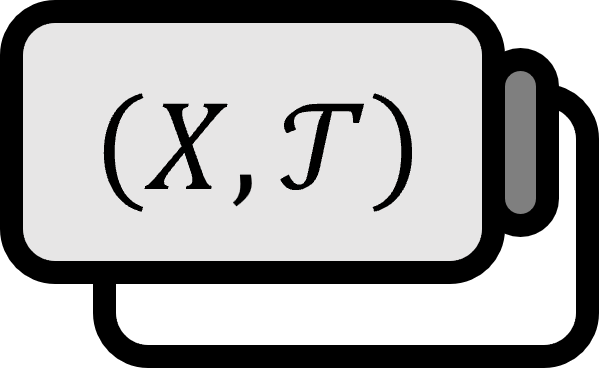The Equivalence between Compact Metric Spaces and Complete, Totally Bounded Spaces
Theorem 1
A metric space is compact if and only if it is complete and totally bounded.
Proof
$(\Rightarrow)$
Suppose the metric space $X$ is compact.
Properties of complete metric spaces: If $(X,d)$ is a metric space and $K \subset X$,
- [1]: $K$ is a complete subspace. $\iff$ $X$ where $K$ is a closed set.
- [2]: $K$ is a totally bounded space $\iff$ $X$ where the closed set $K$ is compact.
- $X \subset X$ is a closed set in $X$, so it is a complete space.
- Since the closed set $X \subset X$ is compact, it is totally bounded.
$(\Leftarrow)$
Suppose the metric space $X$ is a totally bounded space with completeness.
Pointwise compactness: $K \subset X$ being precompact (pointwise compact) means for all sequences $\left\{ x_{n} \right\} \subset K$ defined in $K$, there exists a convergent subsequence $\left\{ x_{n '} \right\} \subset \left\{ x_{n} \right\}$ that converges to $x \in X$.
Proving that $X \subset X$ is sequentially compact, i.e., precompact, implies that $\overline{X} = X$, thus proving $X$ is compact, is the same as proving $X$ is sequentially compact.
Part 1.
Since $X$ is a totally bounded space, any $\varepsilon > 0$ can cover $X$ with a finite number of balls of radius $\varepsilon$.
Considering any sequence $\left\{ x_{n} \right\}_{n \in \mathbb{N}} \subset X$ defined in $X$, at least one of the finite balls covering $X$ must contain infinitely many points of $\left\{ x_{n} \right\}_{n \in \mathbb{N}}$.
Part 2. $J_{1} \subset \mathbb{N}$
Given a radius $\varepsilon = 1$, at least one ball in the finite covering of $X$ contains infinitely many points of $\left\{ x_{n} \right\}_{n \in \mathbb{N}}$. Let’s call this ball $B_{1}$ and pick the set of indices $J_{1}$ that belong to $x_{n}$ included in it. Formally, it is as follows. $$ J_{1} := \left\{ n \in \mathbb{N} : x_{n} \in B_{1} \right\} $$
Part 3. $J_{k} \subset \mathbb{N}$
Following the method we used to select $B_{1}$ and $J_{1}$, let’s pick $B_{k}$ and $J_{k}$ for $\varepsilon = {{ 1 } \over { k }}$. Since the method to define $J_{k}$ is the same as $J_{1}$, all these sets are infinite, and we must reduce $\varepsilon = {{ 1 } \over { k }}$ as $\left\{ x_{n} \right\}_{n \in \mathbb{N}}$ converges there, thus the following holds. $$ J_{1} \supset J_{2} \supset \cdots $$
Part 4.
Choose an $n_{1} \in J_{1}$, and for each $J_{k+1}$, select $n_{k+1} \in J_{k+1}$ such that $n_{k+1} > n_{k}$ holds. The feasibility of this selection is justified by Part 3. Consequently, for all $i,j \ge k$, $x_{n_{i}}$ and $x_{n_{j}}$ belong to $B_{k}$ with a radius of $1/k$. Hence, the subsequence $\left\{ x_{n_{k}} \right\}_{k \in \mathbb{N}}$ of $\left\{ x_{k} \right\}_{k \in \mathbb{N}}$ becomes a Cauchy sequence, and since $X$ is assumed to be complete, this Cauchy sequence must converge to $x \in X$. Therefore, $X \subseteq X$ is sequentially compact, and compact.
■
Munkres. (2000). Topology(2nd Edition): p276. ↩︎
